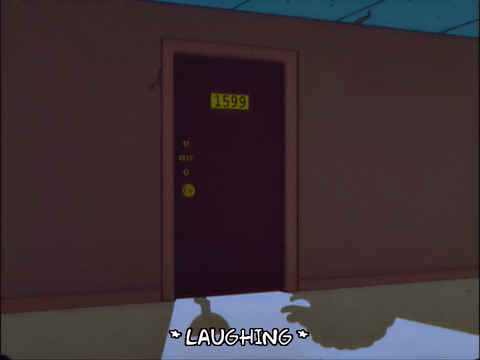By Lorette C. Luzajic
After Jason and Medea, by John William Waterhouse (England) 1907
1. “I don’t want to die,” former Alabama waitress Rhonda Belle Martin said in the days before
she was led to the electric chair at the Kilby Correctional Facility. The year was 1957. “I want a
chance to live.” It’s what we all want: that pink crest of dawn clawing its way back from oblivion. The promise and possibility of a new day.
she was led to the electric chair at the Kilby Correctional Facility. The year was 1957. “I want a
chance to live.” It’s what we all want: that pink crest of dawn clawing its way back from oblivion. The promise and possibility of a new day.
2. It’s what her victims wanted, too. Another chance, another sunrise. How many did she snuff
out with her arsenic and old lace? Even Rhonda couldn’t remember.
out with her arsenic and old lace? Even Rhonda couldn’t remember.
3. Did she think of the children as she dipped her cinnamon roll into her coffee, at her last
supper? Did she see the face of her mother in the grinds or the crumbs, Mother, whose coffee she had poisoned?
supper? Did she see the face of her mother in the grinds or the crumbs, Mother, whose coffee she had poisoned?
4. Rhonda admitted to killing several of her seven children. She also killed her second husband.
She married her fifth and last husband after killing her fourth, his father.
She married her fifth and last husband after killing her fourth, his father.
5. She tried to kill him, too. Slowly, the way she liked it. He refused to die. The ant poison
crippled him. Paraplegic in a chair. She liked that, too. The neediness and dependency. She
enjoyed tending the sick.
crippled him. Paraplegic in a chair. She liked that, too. The neediness and dependency. She
enjoyed tending the sick.
6. Her husband/step-son in the hospital is how she finally got caught. There were too many
questions.
questions.
7. She got a taste for the poison as a young mother. “The first time, I used insect poison my
stepdaddy had under the house. I just got the urge and I suddenly did it.” Her daughter was four
years old and did not survive.
stepdaddy had under the house. I just got the urge and I suddenly did it.” Her daughter was four
years old and did not survive.
8. All seven of her children died, suddenly, or after various mysterious illnesses. Rhonda
confessed to a handful of them. The others were investigated but not proven. She said her first
daughter was born disabled. The Montgomery Advisor quoted her. “I never let that little girl get
out of my sight. I cared for Adelaide day and night for three years until she died a natural death.
Soon after she died, another of my children died a natural death.” The paper questioned whether her mind snapped after the trauma. The truth was probably something different, and too terrible to bear.
confessed to a handful of them. The others were investigated but not proven. She said her first
daughter was born disabled. The Montgomery Advisor quoted her. “I never let that little girl get
out of my sight. I cared for Adelaide day and night for three years until she died a natural death.
Soon after she died, another of my children died a natural death.” The paper questioned whether her mind snapped after the trauma. The truth was probably something different, and too terrible to bear.
9. Factitious disorder imposed on another; Munchausen by proxy. Rhonda was arrested in 1956.
The syndrome wasn’t named or discussed until 1977. A sadistic form of child abuse where a parent, usually the mother, feigns the illness of a child. She may convince the child they are ill
and cannot play or socialize normally. She may inflict illness on them by injuring them or poisoning them. Milder versions mean a moderately sick child. It is quite common for her to kill
her child, then have more kids so she can do it again and again.
The syndrome wasn’t named or discussed until 1977. A sadistic form of child abuse where a parent, usually the mother, feigns the illness of a child. She may convince the child they are ill
and cannot play or socialize normally. She may inflict illness on them by injuring them or poisoning them. Milder versions mean a moderately sick child. It is quite common for her to kill
her child, then have more kids so she can do it again and again.
10. She gets off on her victim’s complete dependence and submission, on being needed, on visits to the doctor, on the thin line between life and death, and most of all, on the sympathy from others like doctors or neighbours. They see her as a good, caring mother, unjustly afflicted with pain and responsibility. She loves the attention.
11. Assumed to be rare, one in a million. Newer studies suspect it’s more like one in two hundred. No one dares suspect the truth when they see it, entangled in everything we think of as good and pure and nurturing. Hidden in plain sight. No one suspects a loving wife and mother, or a grieving one.
12. Experts and the prosecution were looking for motivations they could understand. They said
she killed for the insurance money. The payout for one husband was around $500.
she killed for the insurance money. The payout for one husband was around $500.
13. She said she found prison to be full of nice and caring people, not like the stereotypes. The staff was wonderful. She was herself very nurturing to the other inmates who looked up to her as the mother they never had. Just as she had enjoyed looking after sick neighbours and her
disabled daughters, she enjoyed the opportunity to make a difference inside those walls. She also received a lot of letters and cards from people who read about the murders. “I have more friends now than I’ve ever had.”
disabled daughters, she enjoyed the opportunity to make a difference inside those walls. She also received a lot of letters and cards from people who read about the murders. “I have more friends now than I’ve ever had.”
14. Rhonda took care of everything in advance of her date of execution. She would be buried in
the Montgomery cemetery, beside two of her five husbands and most of her children, all of them, her victims.
the Montgomery cemetery, beside two of her five husbands and most of her children, all of them, her victims.
15. Life Magazine reported at the time, how Rhonda especially enjoyed receiving get-well cards
when her loved ones were ill, and a torrent of lovely sympathy cards after they died.
when her loved ones were ill, and a torrent of lovely sympathy cards after they died.
Lorette C. Luzajic has published hundreds of flash fictions, poems, and essays in journals and anthologies, including recent works in Ghost Parachute, Eclectica, and Stray Branch. She is the founder of The Ekphrastic Review and The Mackinaw: a journal of prose poetry. Almost all of her work is ekphrastic, that is, inspired by art. Sometimes, her stories take a dark turn. She is also a visual artist working in collage and mixed media, with collectors in 40 countries so far. Visit her at www.mixedupmedia.ca.


